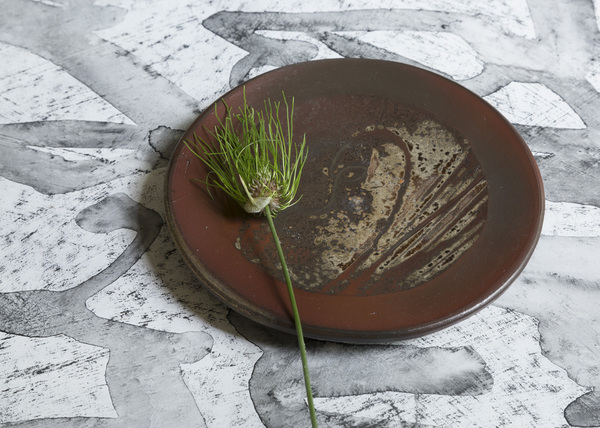As a potter I am used to the idea of transformation. We start with mud and once the clay is fired it is hard like stone. I often say being a potter allows us the gift of being able to see into the future. Potters are used to taking shrinkage and drying into account. We can look at unfired materials or glazes and imagine how the heat and atmosphere will change color and texture. This understanding is not without its disappointments and surprises but it is also akin to being a gardener. As gardeners as we take a seed and water it we can imagine what it will look like as a sprout, a full grown plant and what happens when it goes to seed. We might assign our success or failure to the gods of rain or fire, but it might equally be through subtle shifts in habits, learning to see clues and remembering to make adjustments that in combination permit us to make changes in our lives and our work.
 " I've watched, again and again, as one thing becomes something else--the way a seed becomes a tree becomes a board becomes a bookshelf. For people, such transformation are subtler, and perhaps more difficult to achieve. We cannot take a hacksaw to our habits, after all. But as Ovid writes," By birth we mean beginning to re-form, a thing's becoming other than it was."
" I've watched, again and again, as one thing becomes something else--the way a seed becomes a tree becomes a board becomes a bookshelf. For people, such transformation are subtler, and perhaps more difficult to achieve. We cannot take a hacksaw to our habits, after all. But as Ovid writes," By birth we mean beginning to re-form, a thing's becoming other than it was."
--Nina MacLaughlin, Hammer Head: The Making of a Carpenter, page 2
 " I've watched, again and again, as one thing becomes something else--the way a seed becomes a tree becomes a board becomes a bookshelf. For people, such transformation are subtler, and perhaps more difficult to achieve. We cannot take a hacksaw to our habits, after all. But as Ovid writes," By birth we mean beginning to re-form, a thing's becoming other than it was."
" I've watched, again and again, as one thing becomes something else--the way a seed becomes a tree becomes a board becomes a bookshelf. For people, such transformation are subtler, and perhaps more difficult to achieve. We cannot take a hacksaw to our habits, after all. But as Ovid writes," By birth we mean beginning to re-form, a thing's becoming other than it was."--Nina MacLaughlin, Hammer Head: The Making of a Carpenter, page 2
.
Leave a comment